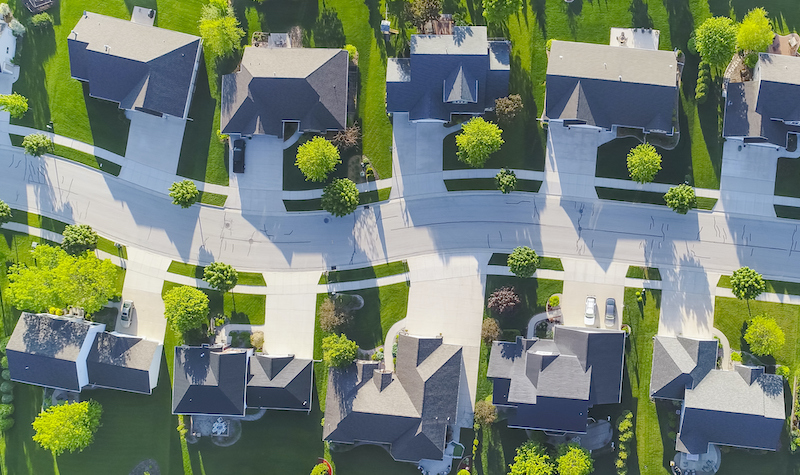
Critics argue that the Trump Administration rule to protect suburbs will negatively impact fair housing.
President Donald J. Trump tweeted this past summer that “all of the people living their Suburban Lifestyle Dream … will no longer be bothered or financially hurt by having low income housing built in your neighborhood.”
But critics claim that, in boasting about a new so-called fair housing regulation, President Trump’s tweet panders to “racist fears.” Housing advocates and civil rights groups largely denounce the new rule, raising concerns that it does not fulfill the mandate of the Fair Housing Act.
The new rule, recently adopted by the U.S. Department of Housing and Urban Development (HUD), narrowly interprets a mandate that local and state housing authorities “affirmatively further fair housing.” Under the new rule, grantees will receive funding if they take any steps that HUD finds “rationally related to promoting fair housing.” Fair housing means that all people can rent or buy a home, secure a mortgage, and seek housing assistance free from discrimination due to race, color, national origin, religion, sex, familial status, or disability.
The Trump Administration revoked nearly 25 years of rulemaking by repealing both a 2015 rule and a 1994 rule issued during the Clinton Administration. The 2015 rule sought to remedy the disproportionate housing needs of individuals based on race, religion, sex, national origin, disability, and familial status—tackling the 1994 rule’s attempt and failure to reduce racial segregation in housing by requiring grantees to identify key “impediments” to fair housing. The Obama-era rule strengthened the mandate to further fair housing by requiring local and state housing authorities to engage in more robust goal setting, provide additional data on housing discrimination, and meet heightened reporting requirements. It did not, however, impose quotas or force low-income housing, as President Trump has claimed.
The new Trump Administration rule clears previous regulations and returns to the “original understanding” of what it means to affirmatively further fair housing set before the 1994 Clinton Administration rule. HUD now interprets the statute’s mandate as “flexible and unspecified” but still requires the grantee to “take an active role” in promoting fair housing. The Trump Administration argues that by removing cumbersome reporting requirements, it preserves federalism principles by giving “local communities maximum flexibility in designing and implementing sound policies responsive to unique local needs.”
President Trump and HUD Secretary Ben Carson tout the new rule as protecting America’s suburbs. They argue that the Obama-era rule encouraged localities “to abolish single-family zoning, compel the construction of high-density ‘stack and pack’ apartment buildings … and forcibly transform neighborhoods across America so they look and feel the way far-left ideologues and technocratic bureaucrats think they should.”
But outside experts cast doubt on the Trump Administration’s view of the suburbs as already diverse. Elizabeth Kneebone, senior fellow at the Brookings Institution, questions the accuracy of President Trump and Secretary Carson’s understanding of the suburbs. Kneebone affirms their assertion that the suburbs overall are diverse. Yet, she calls attention to the long history of exclusionary zoning practices, such as redlining, that created unequal suburban areas for different races—people of different races live in different suburbs.
Housing advocates and civil rights groups largely criticize the Trump Administration’s new rule. Lisa Rice, president and CEO of the National Fair Housing Alliance, condemned HUD’s new rule by calling it a “cynical ploy to win over suburban white voters.” Rice argues that the rule will “weaken the suburbs” because it does not promote anti-discriminatory housing policy.
Advocates also raise concerns about the lack of requirements in the new rule. Jesse Van Tol, CEO of the National Community Reinvestment Coalition, explains that because the new rule imposes no requirements to further fair housing, local governments can “do nothing but talk … and claim they furthered fair housing.” As a result, Van Tol argues that the rule will not address the “persistent patterns of racial segregation that continue to create unfair and unjust life outcomes for people based on their zip codes.” Heather Abraham, professor at University of Buffalo School of Law, similarly argues that the new rule is “profoundly inadequate to meaningfully reduce segregation” because there are no compliance and accountability tools.
Perhaps, as the Trump Administration asserts, the new rule will reduce reporting burdens on localities and allow them to develop more resources to ensure equity. Conversely, as housing advocates argue, revoking the Obama-era rule may constitute a “dramatic step backwards.”
"choice" - Google News
November 17, 2020 at 12:07PM
https://ift.tt/3f7gPVP
Preserving Community and Neighborhood Choice? - The Regulatory Review
"choice" - Google News
https://ift.tt/2WiOHpU
https://ift.tt/3c9nRHD
Bagikan Berita Ini














0 Response to "Preserving Community and Neighborhood Choice? - The Regulatory Review"
Post a Comment